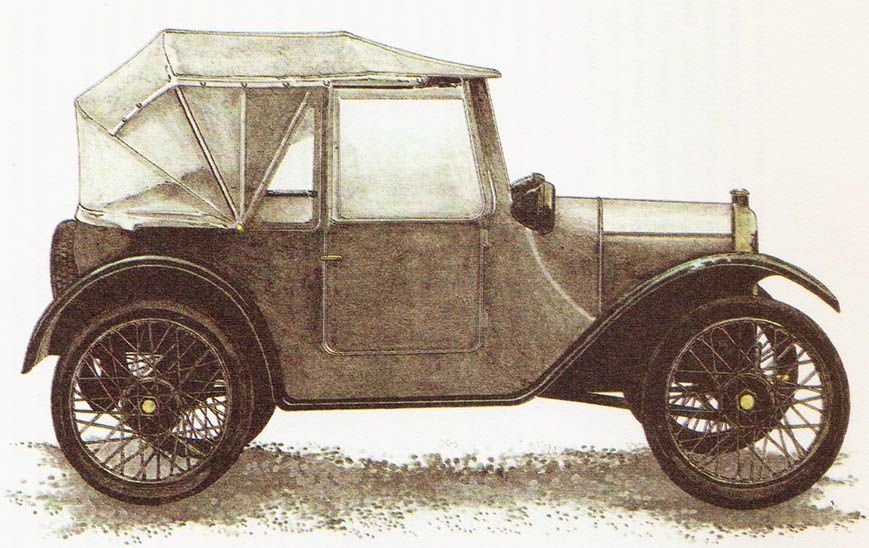AUSTIN SEVEN – year 1925
Manufacturer: Austin Motor Co. Ltd., Birmingham, Anglia.
W 1905 r. Herbert Austin (later Lord of Austin of Longbridge) began building cars at his factory in Longbridge. At that time, he already had extensive experience working in the largest English car plant, Wolseley.
Wanting to meet the demand for a popular car, Austin's company released late 1922 r. model Austin Seven.

The first Austin Seven had a water-cooled 4-cylinder engine with a removable cylinder head, about the diameter of the cylinders 56 mm and piston stroke 76,2 mm, which corresponded to the displacement 747 cm3. The engine developed power 7,7 kW (10,5 KM) by 2400 RPM. The gearbox was 3-speed. The car, of course, had rigid bridges, the front is sprung by a transverse semi-elliptical spring, at the rear with longitudinal quarter-elliptical springs. From the beginning, it also had four-wheel brakes, which in the years 1922-1923 with small cars was not yet widely used. The hand brake acted on the rear wheels, foot on the front. The wheels had spoked rims. The capacity of the fuel tank was only 18 liters, but with wear 6 liters per 100 km, this amount was enough for longer journeys. From the sizes (wheelbase 1,90 m, a track width 1,02 m) can be seen, that Austin Seven is a miniature car. Its curb weight was 360 kg, 4-the local open body with a folding roof had side windows of artificial glass. The electric horn was part of the standard equipment.
Austin Seven with numerous improvements was produced until July 1938 r., that is almost 16 years. Initially, it had no electric starter, which only received the series in 1924 r. W 1925 r. wheel sizes increased, however, the four-wheel foot brake was only introduced in 1931 r. The gearbox remained until 1934 r. out of sync.
Austin Seven was the ancestor of many four-wheeled "kids."”. In France, it was produced under the name Rosegart, in Germany under the name Dixi, in Japan it was known as Datsun.
Austin Motor Company w 1952 r. merged with Nuffield and became part of the British Motor Corporation.